
Kratie
Kratie is a small and pretty town in northeastern of Cambodia. Due to its location, Kratie is quite remote and not really developed in terms of tourism. However, with its authentic and unexploited beauty together with unique ancient Angkor Temples Kratie is still a worth-visiting destination in Cambodia.
- Location: In eastern Cambodia, on the banks of the Mekong
- River Status: A rich in culture land
- Population: 263.175 (1998)
- Area: 11.094 km²
- Religions: Theravada Buddhism
- The large-scale dolphin sanctuaries
- A number of architecture characterizing Cambodia’ culture and history
Being endowed with Mekong River flowing from the north to the south, Kratie owns peaceful and romantic landscapes. Mekong River also gifted this province hundreds of seasoned flooded islands as well as rich and diverse wetland ecosystems with many kinds of dolphins, fish and birds. Great part of Kratie is covered with dense forest and other part if green paddies and villages which create the immense green for this pretty town.
What is the best time to visit Kratie?
The best time to visit Kratie is during the dry season, from November to March. This period offers pleasant weather and increased chances of spotting the Irrawaddy dolphins. However, Kratie can be visited year-round, with each season bringing its own charm.

Chruoy Rey
The Chruoy Rey in Kratie is a famous historical site of Kratie. The Chruoy Rey in Kratie is one of the...
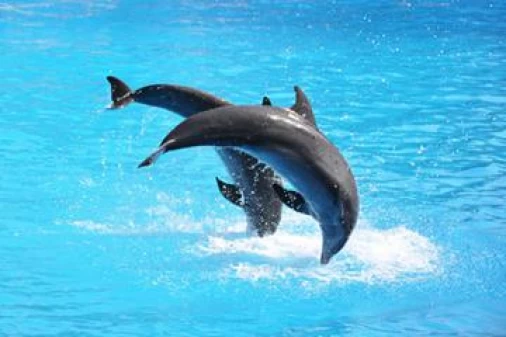
Dolphin Habitat
The Dolphin Habitat, Kratie is a spectacular wildlife and nature reserve of Kratie. The Dolphin Habitat,...
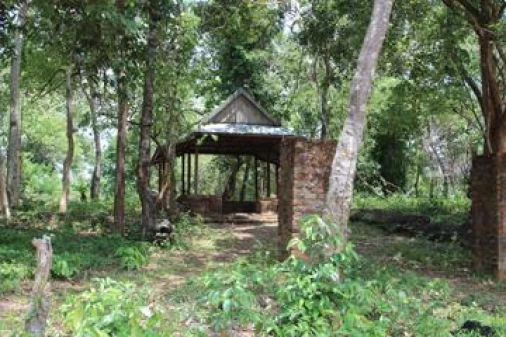
Phnom Preah
The Phnom Preah, Kratie is a picturesque wildlife and nature reserve alluring local as well as foreign...
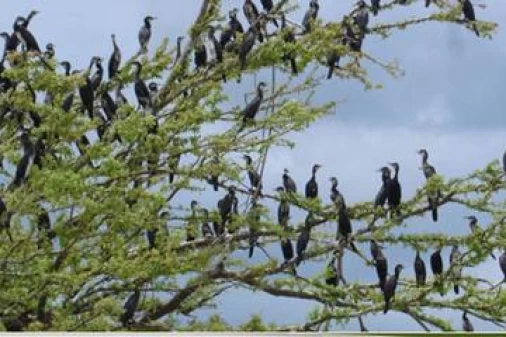
Phnom Sopor Kaley
The Phnom Sopor Kaley, Kratie is one of the top tourist attractions in Kratie. The Phnom Sopor Kaley,...
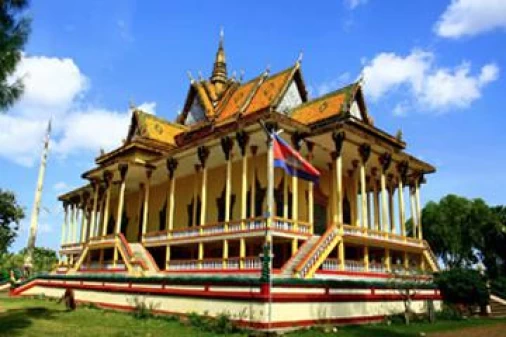
The 100-Column Pagoda
The 100-Column Pagoda is located at Sam Bor District in 36-kilometer distance, North of the provincial...
Frequently asked questions
Kratie is relatively remote and not heavily touristic destination in northeastern Cambodia. Lying on the banks of the mighty Mekong River, tranquil Kratie is predominately known as the shelter of the rare Irrawaddy dolphins. And that’s the main reason for tourists flock here with the hope of spotting these incredible freshwater creatures once in their lifetime. Kratie is a great to stop and unwind in the middle between bustling Phnom Penh Capital and the northwest jungles of Mondulkiri and Ratanakiri. If you want to wind deeper into the “real” Cambodia, it’s quite sure that after reading our guide of the top attractions in Kratie, this lesser-known part of the country will win a place in your heart.
1. Dolphin Habitat Site
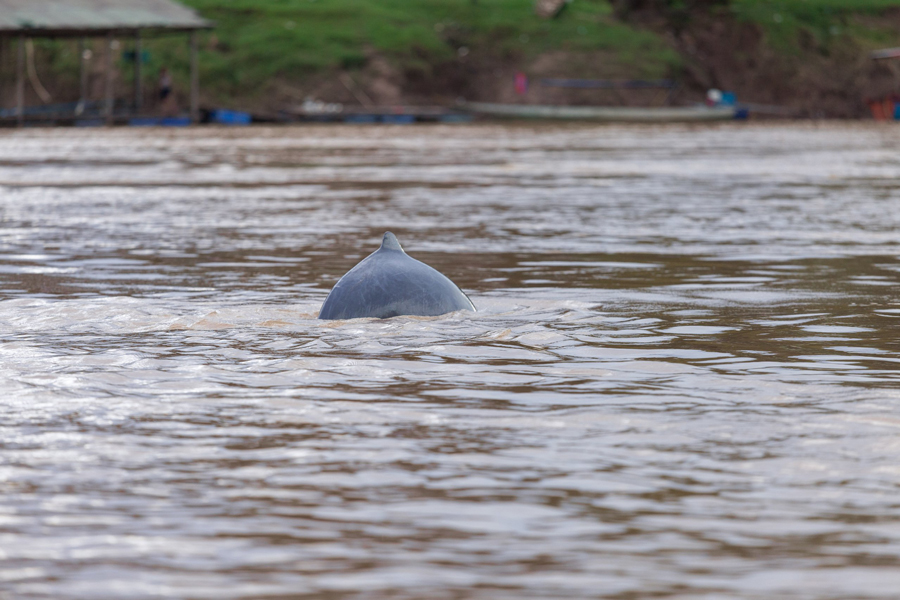 The Dolphin Habitat Site is situated at Kampi Village, only 15 km away from Kratie Town. Nature lovers and wildlife conservationists consider it as the best spot to watch the Irrawaddy dolphins. These Mekong dolphins are put on the critically endangered list of marine species that lives in the freshwater. It is estimated that there are between 66 and 86 dolphins left in the upper Cambodian Mekong area. Therefore, the Dolphin Habitat Site plays a significant role in the conservation of these dolphins, rather than a tourist attraction.
The Dolphin Habitat Site is situated at Kampi Village, only 15 km away from Kratie Town. Nature lovers and wildlife conservationists consider it as the best spot to watch the Irrawaddy dolphins. These Mekong dolphins are put on the critically endangered list of marine species that lives in the freshwater. It is estimated that there are between 66 and 86 dolphins left in the upper Cambodian Mekong area. Therefore, the Dolphin Habitat Site plays a significant role in the conservation of these dolphins, rather than a tourist attraction.
Tourists need to be very patient because the chance of seeing dolphins isn’t guaranteed. The sightseeing trip can be done by boat trip or kayaking activity but should follow the dolphin watching guidelines to protect and avoid disturbing dolphins in their natural habitat.
2. Koh Trong Island
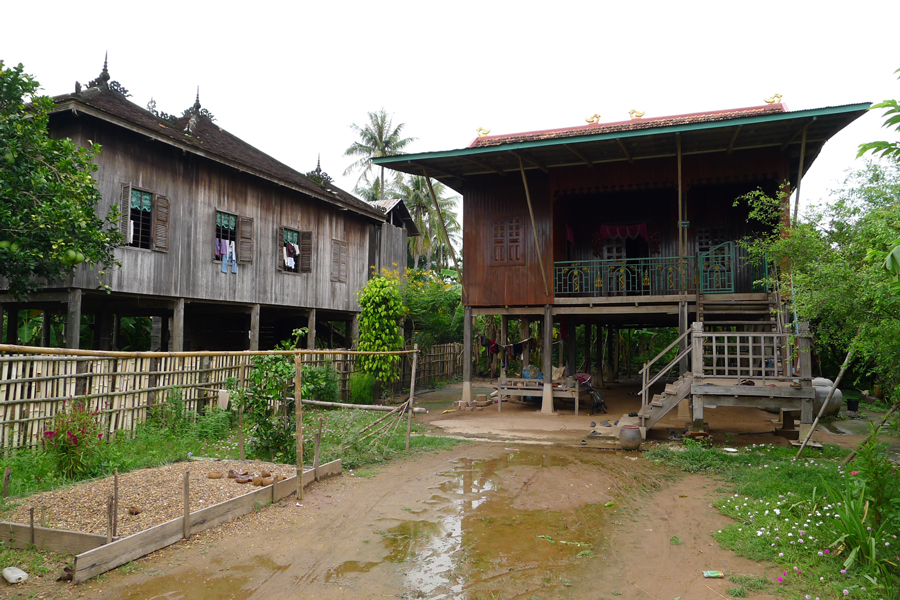 Koh Trong is a bucolic island opposite the riverfront of Kratie Town. It actually looks like an almighty 6km-long sandbar in the middle of the river. The only way to access Koh Trong is taking 5-minute wooden public ferry from the pier in front of Jasmine Boat Restaurant in downtown Kratie. On arrival, you can go directly to the Community Based Tourism Center where you can hire bicycles or ox-carts, book homestay if you wish to spend an overnight stay here.
Koh Trong is a bucolic island opposite the riverfront of Kratie Town. It actually looks like an almighty 6km-long sandbar in the middle of the river. The only way to access Koh Trong is taking 5-minute wooden public ferry from the pier in front of Jasmine Boat Restaurant in downtown Kratie. On arrival, you can go directly to the Community Based Tourism Center where you can hire bicycles or ox-carts, book homestay if you wish to spend an overnight stay here.
The nine-kilometer trail in a narrow concrete path around the island will bring tourists through the lush and unspoilt rural Cambodian scenery filled with palm trees, paddy fields, market gardens and pretty Khmer-style wooden houses. At the southern tip of the island located a small Vietnamese pagoda and floating Vietnamese village.
Beside two homestays with basic sleeping arrangements on the floor of the stilted wooden houses, boutique lodge Rajabori Villas with 13 traditional Khmer wooden houses and a swimming pool is the best accommodation in the island.
3. Phnom Sombok
 Phnom Sombok is a small Buddhist temple perched high on a hillock, which is located 10 km north of Kratie Town. Being built in the 15th century, the temple is dedicated to a Buddhist monk named Neak Voan, who resided, meditated and taught his disciples here. Situated in between two mountain peaks, Phnom Sombok boasts scenic panorama views of Mekong River. To reach the main temple on top, visitors need to climb about 300 stairs and are impressed by the long line of life-sized monk statues forming a guard of honor.
Phnom Sombok is a small Buddhist temple perched high on a hillock, which is located 10 km north of Kratie Town. Being built in the 15th century, the temple is dedicated to a Buddhist monk named Neak Voan, who resided, meditated and taught his disciples here. Situated in between two mountain peaks, Phnom Sombok boasts scenic panorama views of Mekong River. To reach the main temple on top, visitors need to climb about 300 stairs and are impressed by the long line of life-sized monk statues forming a guard of honor.
Hilltop consists of the sanatorium housing a reclining Buddha, a medication center and monastery of young monks, and a pavilion depicting torture scenes of those who are not virtuous enough to lead a holy and clean afterlife. Sunrise and sunset are two best moments to visit Phnom Sombok, admire the stunning view overlooking Mekong River or immerse yourself in nature. This is a good place to visit on the way back into town after dolphin watching tour in Kampi Village.
4. The 100-Pillar Pagoda
 The 100-Pillar Pagoda (or locally known as Wat Sorsor Muoy Roi) is located at Sam Bor District in 38 km distance to the north of Kratie Town. In the 8th century, this site used to be the Royal Palace temple of Sam Phu Borak Capital of the Chen La time located. In 1806, the initial pagoda and its 100 columns was constructed on this base in memory of Preah Ang Chan Reachea II’s daughter who was the victim of a crocodile in the nearby river. After being damaged by strong lightening, the pagoda was pulled down and rebuilt with only 78 columns. The pagoda visitors can see today was renovated two more times (in 1987 and 1998) with 116 columns.
The 100-Pillar Pagoda (or locally known as Wat Sorsor Muoy Roi) is located at Sam Bor District in 38 km distance to the north of Kratie Town. In the 8th century, this site used to be the Royal Palace temple of Sam Phu Borak Capital of the Chen La time located. In 1806, the initial pagoda and its 100 columns was constructed on this base in memory of Preah Ang Chan Reachea II’s daughter who was the victim of a crocodile in the nearby river. After being damaged by strong lightening, the pagoda was pulled down and rebuilt with only 78 columns. The pagoda visitors can see today was renovated two more times (in 1987 and 1998) with 116 columns.
From the outside, the 100-Pillar Pagoda is quite impressive with pristine white color and Buddhist flags. However, the special features only can be seen when entering inside: colorful murals from floor to ceiling to depict different Buddhist mythologies and explain legends of nature. This is one of the largest and most beautiful pagodas in Cambodia, and frequently visited by local people who live nearby, especially in special occasions like Khmer New Year. Therefore, tourists should show their respects and dress up properly during the visit.
5. Wat Rokar Kandal
 Just only 2-3 km south of Kratie on the road to Chhlong is Wat Rokar Kandal. Dating from the 19th century, this is one of the oldest temple in the region. This rare traditional wooden pagoda was restored and converted into a small local handicraft center, where visitors can find a lovely souvenir to bring home. Even being simple in design, it’s still worth paying a visit there to admire the beautiful stenciled interior pillars and an ornate timber roof, together with adjacent traditional wooden houses.
Just only 2-3 km south of Kratie on the road to Chhlong is Wat Rokar Kandal. Dating from the 19th century, this is one of the oldest temple in the region. This rare traditional wooden pagoda was restored and converted into a small local handicraft center, where visitors can find a lovely souvenir to bring home. Even being simple in design, it’s still worth paying a visit there to admire the beautiful stenciled interior pillars and an ornate timber roof, together with adjacent traditional wooden houses.
6. Mekong Turtle Conservation Center
This conservation center is situated right on the grounds of 100-Pillar Pagoda and established by a NGO named Conservation International. The rare Cantor’s giant softshell turtle – one of the largest freshwater turtles, was rediscovered along this northern stretch of Mekong in 2007. This center does important tasks in taking care of large turtle rescued from trafficking as well as raising hatchlings for around 10 months before releasing them in the wild. These turtles burry themselves into the mud and sand as a protection mechanism.
7. Kampi River Rapids
 Kampi River Rapids is a seasonal tourist attraction in Kratie and located just a few kilometers to the north of the dolphin watching spot of Kampi Village. In dry season from January to May, locals go picnic here on weekends or public holidays. When water level in this part of Mekong drops sufficiently in dry season, many sandbars appear then wooden platforms are quickly established over these grounds with cool shady roofs. Hammocks and mats are available for rent by the hour. Wooden bridges are also set up to allow easy access to floating cottages.
Kampi River Rapids is a seasonal tourist attraction in Kratie and located just a few kilometers to the north of the dolphin watching spot of Kampi Village. In dry season from January to May, locals go picnic here on weekends or public holidays. When water level in this part of Mekong drops sufficiently in dry season, many sandbars appear then wooden platforms are quickly established over these grounds with cool shady roofs. Hammocks and mats are available for rent by the hour. Wooden bridges are also set up to allow easy access to floating cottages.
It’s so perfect to spend a lazy and slow day in this scenic spot, swim in the refreshing waters, chill out with local snacks and cold drink. You can bring your own stuffs, otherwise there is a bunch of knick-knack shops and stalls selling local food and drinks on site.
8. Cham Pey Waterfall
 Cham Pey Waterfall is located along the road No. 68, about 35 km from Kratie Town. Besides the waterfall at the mountain valley, the natural complex is covered with many trees and lots of orchids and other colorful flowers. Not quite far from the waterfall is another natural and cultural site named Rut Cham Pey and organized by monks who are meditating there. In Rut Cham Pey, tourists can see many statues depicting the process of human life, religious and animal figures.
Cham Pey Waterfall is located along the road No. 68, about 35 km from Kratie Town. Besides the waterfall at the mountain valley, the natural complex is covered with many trees and lots of orchids and other colorful flowers. Not quite far from the waterfall is another natural and cultural site named Rut Cham Pey and organized by monks who are meditating there. In Rut Cham Pey, tourists can see many statues depicting the process of human life, religious and animal figures.
Day 1: Siem Reap Arrival
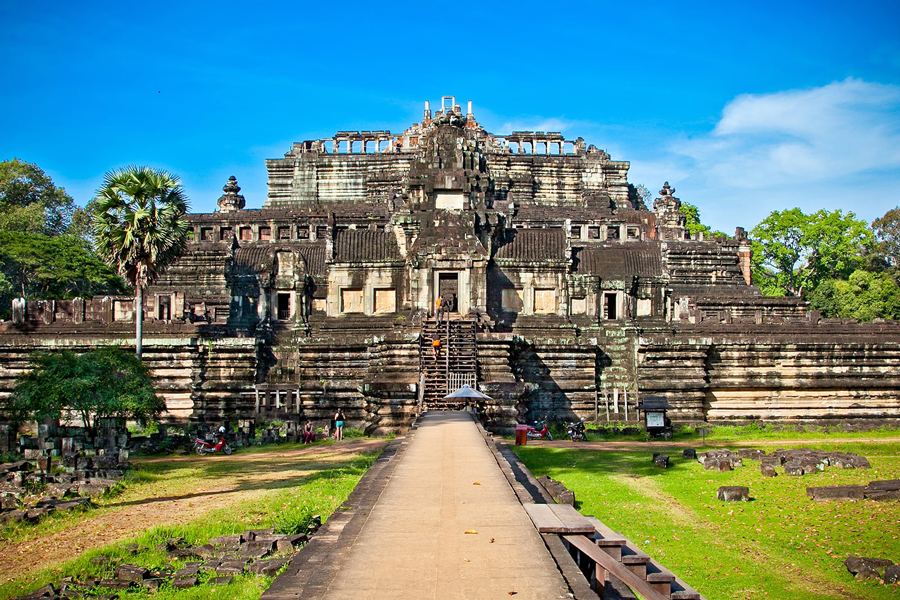 Welcome to Siem Reap, the provincial capital and gateway to the ancient Angkor Temples. Recognized as a World Heritage Site by UNESCO, the Angkor Archaeological Park encompasses dozens of temple ruins including Bayon, Banteay Srei and the legendary Angkor Wat. Upon your arrival at the airport, you’ll be met our friendly guide. Just look for the sign with our Asia Tour Advisor logo and your name.
Welcome to Siem Reap, the provincial capital and gateway to the ancient Angkor Temples. Recognized as a World Heritage Site by UNESCO, the Angkor Archaeological Park encompasses dozens of temple ruins including Bayon, Banteay Srei and the legendary Angkor Wat. Upon your arrival at the airport, you’ll be met our friendly guide. Just look for the sign with our Asia Tour Advisor logo and your name.
In the late afternoon, take an orientation walk around hotel area and later in the afternoon explore the Psar Chass, also known as the “Old Market”.
Day 2: Siem Reap – Angkor Temples
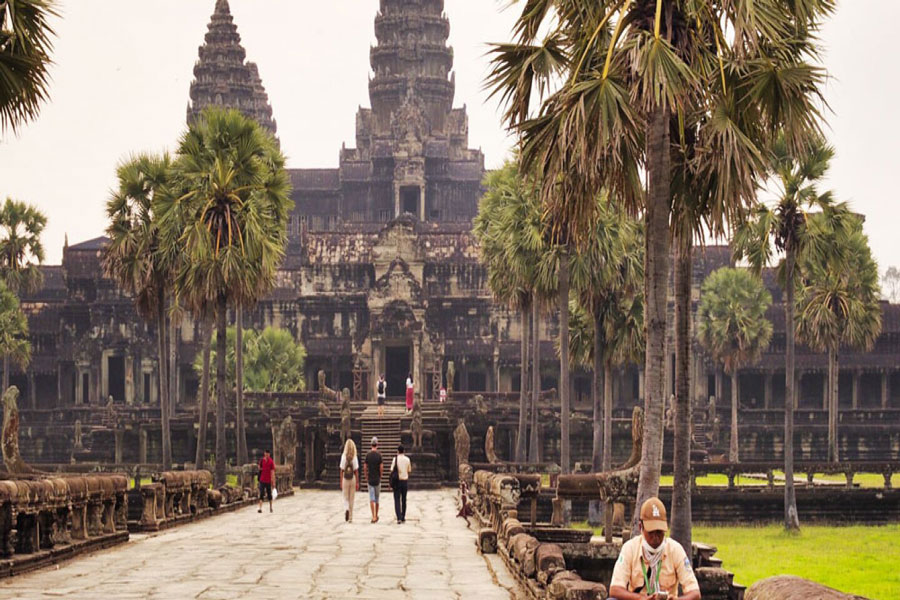 Wake up early to be transferred for picking up the most beautiful, haunting and spiritual moment to visit magnificent Angkor Wat at dawn. This special activity is designed also to help you see “the Temple reflex on the water” when it’s much cooler and less crowded. Angkor Wat, the UNESCO World Heritage Site, which was constructed by Suryavarman II who reigned Cambodia from 1113 to 1152 and built the five towers in the 12th century and dedicated them to the Hindu God Vishnu. The plan of the pyramidal conception of the temple combined with spaces, alleys and ditches is an ancient masterpiece of architectural design and construction.
Wake up early to be transferred for picking up the most beautiful, haunting and spiritual moment to visit magnificent Angkor Wat at dawn. This special activity is designed also to help you see “the Temple reflex on the water” when it’s much cooler and less crowded. Angkor Wat, the UNESCO World Heritage Site, which was constructed by Suryavarman II who reigned Cambodia from 1113 to 1152 and built the five towers in the 12th century and dedicated them to the Hindu God Vishnu. The plan of the pyramidal conception of the temple combined with spaces, alleys and ditches is an ancient masterpiece of architectural design and construction.
For your most convenience, a table with hot tea or coffee and breakfast box arranged by Travel Cambodia will be served right on site of Angkor Wat.
Our journey continues with visiting South Gate of Angkor Thom, with its majestic doors and artifacts. Then visit monumental temple of Bayon which is the heart of Angkor Thom. Later, visit the Elephant Terrace, Terrace of the Leper King and Takeo “Jewel of Crystal”, which is dedicated to the Hindu God Shiva and was erected at the end of the 10th century. Leaving Angkor Thom by the North Gate, you travel to Preah Khan (Sacred Sword), one of Angkor’s largest temples, constructed in the 12th century by Jayavarman VII. You should not miss Ta Prohm Temple, which is a wonderful combination of human genius and natural beauty with its giant trees that have grown there for centuries.
Day 3: Siem Reap – Banteay Srei – Land Mine Museum – Butterfly Center – Bong Thom Homestay
 After the breakfast, we start the tour visiting Banteay Srei that is also one of the must- see sites. This beautiful temple was built in 967 AD by Jayavarman V’s guru, it showcases the most exquisite, deep and complex carvings in all Khmer architecture. Next, we will drop in to visit Land Mine Museum where you will see a collection of thousands of landmines and learn the importance of clearing landmines in Cambodia. It tells a lot the history and culture of this amazing society. You also have chance to interact with a victim from landmine in a village nearby.
After the breakfast, we start the tour visiting Banteay Srei that is also one of the must- see sites. This beautiful temple was built in 967 AD by Jayavarman V’s guru, it showcases the most exquisite, deep and complex carvings in all Khmer architecture. Next, we will drop in to visit Land Mine Museum where you will see a collection of thousands of landmines and learn the importance of clearing landmines in Cambodia. It tells a lot the history and culture of this amazing society. You also have chance to interact with a victim from landmine in a village nearby.
Later in the afternoon, you will have a leisure tour to visit Butterfly Center and spend some time in spectacular surroundings filled with rare and vivid butterflies.
Stop en route and watching the entire process of how local people make the palm sugar…
At the end of the day, transfer to Bong Thom homestay, a unique community-based tourism site which
captures the essence of village life in the heartland of Cambodia (As a community-based
project with neighboring in Phum Sanday, The Bong Thom Homestay aims to help
improve the livelihoods and reduce poverty in the countryside).
Check in to the homestay and enjoy a welcome dinner.
Day 4: Siem Reap – Eco Tour
Morning: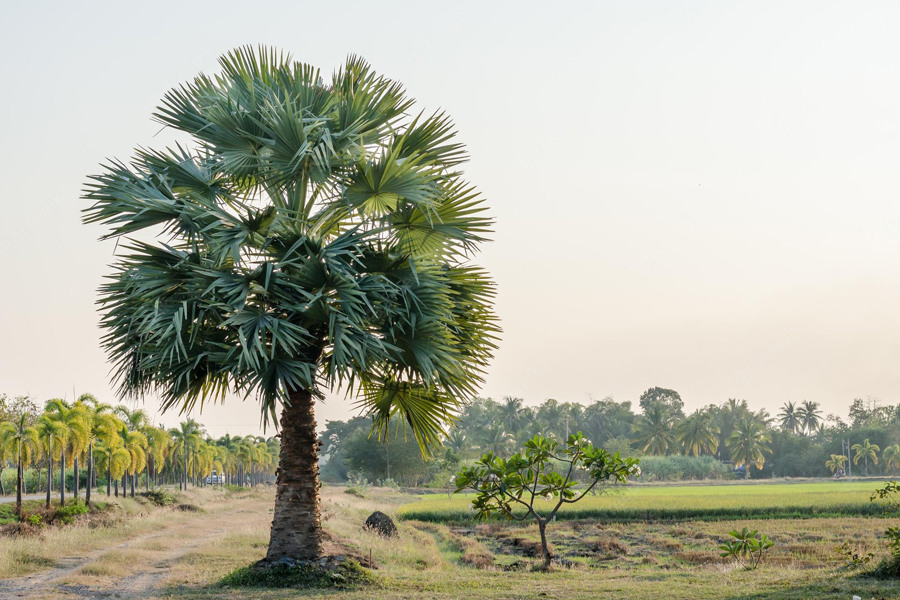 Ox cart tour (Visit sugar palm village and farmer rural life).
Ox cart tour (Visit sugar palm village and farmer rural life).
– Making palm leaf.
– Activities for Rice or Vegetable plantation.
– Return to homestay and enjoy lunch.
Afternoon:
– Activities for Making Krolan (Cooking rice in Bamboo).
– Making Rice noodle. Student can enjoy their testing with fish soup.
– Dine Khmer Dinner set menu at homestay.
Day 5: Siem Reap – Free at leisure
Today is yours. Enjoy the rest of the day at your leisure to relax and explore this charming town.
Day 6: Siem Reap – Sambor Prei Kuk – Kampong Thom
 Enjoy breakfast at your hotel then set out on a drive to Kampong Thom, home to Cambodia’s most impressive group of pre–Angkorian monuments. Here we will visit the ancient temple complex, Sambor Prei Kuk, situated just north of Kompong Thom. The main temples are divided into three complexes, all dedicated to Shiva. Enjoy the serene atmosphere as you wander through these 7th century brick monuments, artfully scattered about the jungle. Return to the town of Kampong Thom in the afternoon and proceed to Paray Village for dinner and a homestay.
Enjoy breakfast at your hotel then set out on a drive to Kampong Thom, home to Cambodia’s most impressive group of pre–Angkorian monuments. Here we will visit the ancient temple complex, Sambor Prei Kuk, situated just north of Kompong Thom. The main temples are divided into three complexes, all dedicated to Shiva. Enjoy the serene atmosphere as you wander through these 7th century brick monuments, artfully scattered about the jungle. Return to the town of Kampong Thom in the afternoon and proceed to Paray Village for dinner and a homestay.
Day 7: Kampong Thom – Kratie – Mekong Dolphin
 Today we travel to Kratie, a vibrant riverside town and home to the endangered freshwater Irrawaddy dolphins. Stop for breakfast at a local restaurant and then continue on to tour to the Cham Ka Lour rubber plantation, before crossing the Mekong River by ferry at Stung Trong/ Krochmar district of Kampong Cham province. Arrive in Kratie in the afternoon and check in at your hotel. Then drive north of town and take a local boat to view the freshwater dolphins that inhabit this stretch of the Mekong. Enjoy an hour on the river, before returning to the quaint French colonial town for the evening.
Today we travel to Kratie, a vibrant riverside town and home to the endangered freshwater Irrawaddy dolphins. Stop for breakfast at a local restaurant and then continue on to tour to the Cham Ka Lour rubber plantation, before crossing the Mekong River by ferry at Stung Trong/ Krochmar district of Kampong Cham province. Arrive in Kratie in the afternoon and check in at your hotel. Then drive north of town and take a local boat to view the freshwater dolphins that inhabit this stretch of the Mekong. Enjoy an hour on the river, before returning to the quaint French colonial town for the evening.
Day 8: Kratie – Kampong Cham – Phnom Penh
 Today we continue our overland expedition, leaving Kratie and passing through Cambodia’s largest rubber–producing region on our way to Kampong Cham. Admire the contrast of lush vegetation and red basaltic soil as we drive through the countryside. Arrive in Kampong Cham in the late morning and visit the Wat Nokor Pagoda. This 11th century Mahayana Buddhist shrine is home to a large reclining Buddha as well as many carved Buddha images. In the afternoon we continue on to Cambodia’s capital, Phnom Penh. Check in at the hotel then enjoy the rest of the evening at your leisure.
Today we continue our overland expedition, leaving Kratie and passing through Cambodia’s largest rubber–producing region on our way to Kampong Cham. Admire the contrast of lush vegetation and red basaltic soil as we drive through the countryside. Arrive in Kampong Cham in the late morning and visit the Wat Nokor Pagoda. This 11th century Mahayana Buddhist shrine is home to a large reclining Buddha as well as many carved Buddha images. In the afternoon we continue on to Cambodia’s capital, Phnom Penh. Check in at the hotel then enjoy the rest of the evening at your leisure.
Day 9: Phnom Penh City Tour
 Welcome to Phnom Penh, Cambodia’s vibrant and bustling capital city. Despite its recent turbulent history, Phnom Penh’s wide tree–lined boulevards and faded colonial mansions hold an undeniable charm. Phnom Penh was founded in the 14th century and has long been a vital trading hub at the confluence of three rivers: the Mekong, Tonle Sap, and Bassac. Start the day learning about the Khmer Rouge and Cambodia’s recent history on a guided tour of the Tuol Sleng Genocide Museum and the notorious Choeung Ek “Killing Fields”. Get the better inside of Cambodian life, we will stop at Russia market, where you can find anything from motorcycle parts to valuable gems. In the afternoon, visit Royal Palace, which is now home to the royal family. In the northern section of the palace grounds lies the Silver Pagoda, the most sacred one in the country and The National Museum.
Welcome to Phnom Penh, Cambodia’s vibrant and bustling capital city. Despite its recent turbulent history, Phnom Penh’s wide tree–lined boulevards and faded colonial mansions hold an undeniable charm. Phnom Penh was founded in the 14th century and has long been a vital trading hub at the confluence of three rivers: the Mekong, Tonle Sap, and Bassac. Start the day learning about the Khmer Rouge and Cambodia’s recent history on a guided tour of the Tuol Sleng Genocide Museum and the notorious Choeung Ek “Killing Fields”. Get the better inside of Cambodian life, we will stop at Russia market, where you can find anything from motorcycle parts to valuable gems. In the afternoon, visit Royal Palace, which is now home to the royal family. In the northern section of the palace grounds lies the Silver Pagoda, the most sacred one in the country and The National Museum.
Day 10: Phnom Penh – Departure
 Have breakfast at the hotel, our driver will transfer you to Phnom Penh International airport to catch your departure flight home.Note: Please be aware that flight times, hotels and all other logistics, services and days of travel are subject to availability. If the listed hotel is fully booked, alternate accommodation will be offered.
Have breakfast at the hotel, our driver will transfer you to Phnom Penh International airport to catch your departure flight home.Note: Please be aware that flight times, hotels and all other logistics, services and days of travel are subject to availability. If the listed hotel is fully booked, alternate accommodation will be offered.
All hotels are rated according to local standards. All itineraries are flexible and can easily be altered to suit your needs and interests. Contact one of our travel consultants for more information.
Finish unforgettable Cambodia Tour with Asia Tour Advisor Co.,. Good bye & see you in the next time! AsiaTourAdvisor can arrange additional customized trips for you if the above itinerary does not match your expectations.
There is decent food to be had in Kratie — and everywhere else in Cambodia — but you won’t get anything like the same range and quality that you find in the tourist and expat hubs.
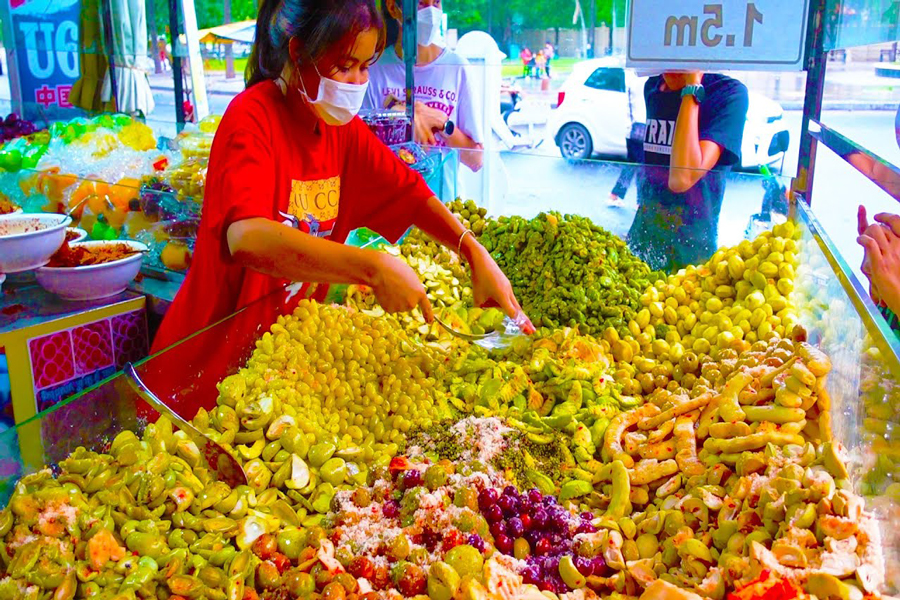 Most of the guesthouses and hotels have their own restaurant attached, among which the most highly rated Khmer one is Heng Heng, on the corner of Street 10 and the riverside (not Heng Heng II, which doesn’t serve food). A typical Cambodian restaurant with heavy, high-backed wooden chairs and dense tables, they have a huge menu of traditional Cambodian dishes and some Western standards. Prices are very reasonable.
Most of the guesthouses and hotels have their own restaurant attached, among which the most highly rated Khmer one is Heng Heng, on the corner of Street 10 and the riverside (not Heng Heng II, which doesn’t serve food). A typical Cambodian restaurant with heavy, high-backed wooden chairs and dense tables, they have a huge menu of traditional Cambodian dishes and some Western standards. Prices are very reasonable.
We loved the atmosphere at Le Tonle, relaxed and airy, with a stylish simplicity. The staff were very helpful and friendly, though as this is a hospitality training centre, there may be some glitches in the works. These students come from disadvantaged backgrounds and are working and studying so they can start to build their own futures and careers, so a little patience will go a very long way. They’re working really hard. The food was delicious, with a wide selection of fresh Khmer and Western favourites, a full bar and fruit shakes.
A somewhat strange riverside option, though great for the views and the sunsets, was Jasmine Boat. A fancier spot than everywhere else, and much favoured by the local big shots, they have a large menu of Khmer and Western food. We tried their beef claypot for breakfast — a dish on which we would live if we could — and found it to be one of the weaker ones we’ve had so far. On the other hand, they have excellent coffee, and are one of the few places in town you can pick up a proper Americano or cappuccino. The wines are good too. The staff were, in a word, delightful.
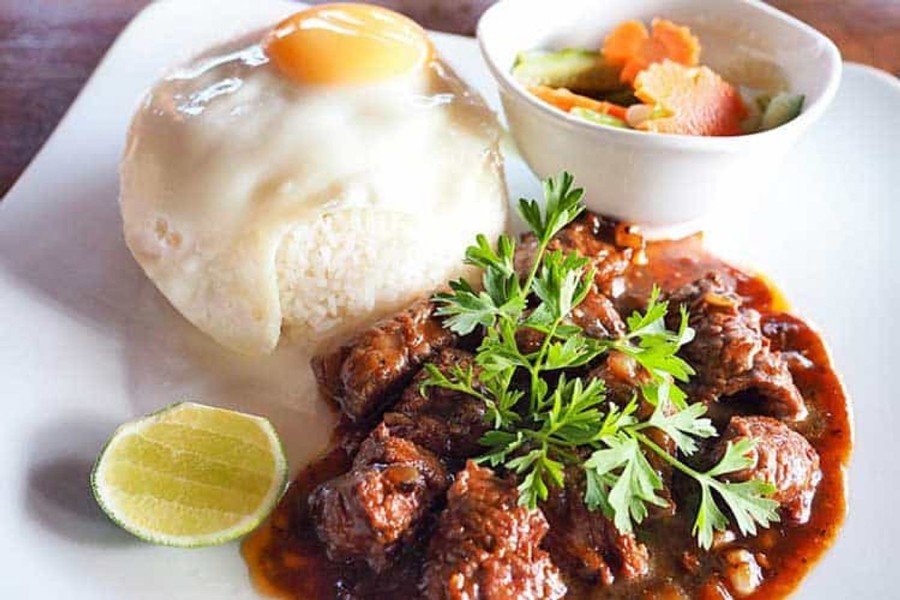 Just off the market, you’ll find Tokae, a very sweet corner restaurant with a great menu of Khmer and Western favourites, and some of the most fun staff we’ve observed, especially when the patently love-struck tuk tuk driver came in to chance his luck with one of the waitresses. They were efficient too. The food was solid, and very, very reasonably priced. Another market option, though a little less charming, is You Hong. Their huge menu of Khmer and Western dishes is served up in a brightly lit almost diner-style space, with low-slung red banquettes. The manager was extremely helpful, and seemed to be a good reference for any local advice.
Just off the market, you’ll find Tokae, a very sweet corner restaurant with a great menu of Khmer and Western favourites, and some of the most fun staff we’ve observed, especially when the patently love-struck tuk tuk driver came in to chance his luck with one of the waitresses. They were efficient too. The food was solid, and very, very reasonably priced. Another market option, though a little less charming, is You Hong. Their huge menu of Khmer and Western dishes is served up in a brightly lit almost diner-style space, with low-slung red banquettes. The manager was extremely helpful, and seemed to be a good reference for any local advice.
If you fancy something a little, well, fancier, then head to Le Bungalow, where you’ll find a beautiful, classy space underneath a traditional Khmer wooden building and a nicely formulated menu of Khmer, French and Italian dishes at mid-range prices. We can only say though that the service was bizarre. The poor server hadn’t the faintest idea what she was doing, yet was let loose without the slightest sign of supervision. The result: we had to spend five minutes rooting around in the freezer looking for our own dinner after the wrong dish had been brought out first, following a good half-hour wait. If it had been anything other than andouillettes, we’d have taken it. We also had to locate our own wine.
Kratie witnesses a warm climate during the dry season, with March, April, and May experiencing the hottest environment. The dry weather provides perfect roads to explore tourism destinations, making the dry season the best time of the year to venture into Kratie. The temperatures keep fluctuating between 27°C and 36°C. Tourists will find solace while relaxing atop the breathtaking beaches of Kratie. The dry season is the best time of the year to catch a glimpse of the cheerful Irrawady dolphins residing in Kratie. Local authorities prefer the cold weather of late afternoons to spot these dolphins.
Dry Season (October to Early May)
 Kratie witnesses a warm climate during the dry season, with March, April, and May experiencing the hottest environment. The dry weather provides perfect roads to explore tourism destinations, making the dry season the best time of the year to venture into Kratie. The temperatures keep fluctuating between 27°C and 36°C. Tourists will find solace while relaxing atop the breathtaking beaches of Kratie. The dry season is the best time of the year to catch a glimpse of the cheerful Irrawady dolphins residing in Kratie. Local authorities prefer the cold weather of late afternoons to spot these dolphins.
Kratie witnesses a warm climate during the dry season, with March, April, and May experiencing the hottest environment. The dry weather provides perfect roads to explore tourism destinations, making the dry season the best time of the year to venture into Kratie. The temperatures keep fluctuating between 27°C and 36°C. Tourists will find solace while relaxing atop the breathtaking beaches of Kratie. The dry season is the best time of the year to catch a glimpse of the cheerful Irrawady dolphins residing in Kratie. Local authorities prefer the cold weather of late afternoons to spot these dolphins.
Wet season (Early May to September)
 The wet season in Kratie experiences temperatures hovering between 24°C and 36°C. Owing to its coastal proximity, the city also witnesses close to 90% humidity. The high amount of rainfall precipitation received during this season provides perfect conditions for crop cultivation. The incessant rainfall turns Kratie into a stunning haven with lush greenery all over its campus. This is the perfect season to visit the different wildlife reserves present in the city and catch a glimpse of the stunning countryside.
The wet season in Kratie experiences temperatures hovering between 24°C and 36°C. Owing to its coastal proximity, the city also witnesses close to 90% humidity. The high amount of rainfall precipitation received during this season provides perfect conditions for crop cultivation. The incessant rainfall turns Kratie into a stunning haven with lush greenery all over its campus. This is the perfect season to visit the different wildlife reserves present in the city and catch a glimpse of the stunning countryside.
Throughout this article, we wish you to have an idea of how to travel to Kratie for your best experience. In case you are looking for your own travel agent, who can offer a wonderful and hassle-free trip to Kratie, please feel free to let us know. We always commit our best to make it your once-in-a-lifetime journey.
You may also like
Absolute Cambodia 14 Days
- Depart Time:Daily
- Starts/Ends:Siem Reap /Phnom Penh
- Tour type:Private Tours
- Travel Style:Nature & Adventure, Heritage Tours, Culture & History
- Activities:Walking tours, Local culture tours, Cultural, religious and historic sites tours, Countryside and village visits tours
- Suitable for:Solo, Family, Group, Couple
- Age range:1 To 90 Years
- Operated in:English, French, Spanish, German, Italian
Cambdodia In Style 10 Days
- Depart Time:Daily
- Starts/Ends:Siem Reap /Phnom Penh
- Tour type:Private Tours
- Travel Style:Family Tours, Culture & History
- Activities:Walking tours, Local culture tours, Cultural, religious and historic sites tours, Countryside and village visits tours
- Suitable for:Solo, Family, Group, Couple
- Age range:1 To 90 Years
- Operated in:English, French, Spanish, German, Italian
 France
France  Spain
Spain  German
German  Italian
Italian 



 Vietnam Tours
Vietnam Tours  Cambodia Tours
Cambodia Tours  Myanmar tours
Myanmar tours  Thailand Tours
Thailand Tours  Laos Tours
Laos Tours